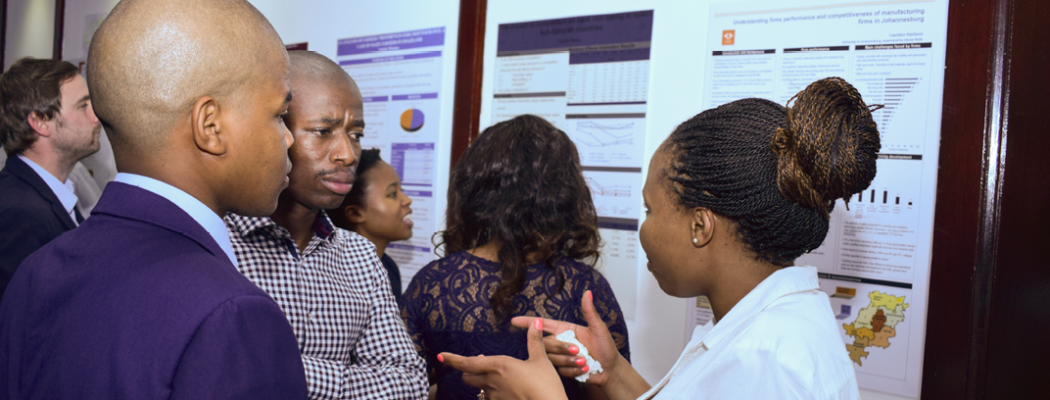Estimating tax gaps in the non-financial sector: a pathway to effective tax collection in South Africa
Many governments, particularly those in developing countries, have set an objective to improve tax revenue mobilization to offer more and better public services to their citizens. To develop effective revenue-raising strategies it is necessary to determine whether there is a tax revenue gap and gain detailed information on the nature and significance of this gap and how it changes over time.
Estimating tax gaps (i.e., what tax should be paid and what is actually paid) provides important information in designing effective tax revenue mobilization strategies
The non-financial corporate sector offers a convenient research environment for tax gap estimations
The corporate income tax gap of the South African non-financial sector was found to be 11% of the potential tax base over 2015–17
This tax gap is, on average, 2% of the South African GDP, which lies midway between the estimates for Slovakia and Costa Rica
The corporate income tax revenue efficiency was 29% lower than what it potentially could have been
Tax gaps for the corporate sector have not previously been estimated in South Africa. These estimates can provide useful information to steer the country’s tax compliance policies to improve revenue collection.
Tax gap estimates reveal revenue collection inefficiencies
The estimation of the non-financial corporate sector tax gap in South Africa over the period 2015–17 is shown in Table 1. The non-financial corporate sector comprises corporations whose principal activity is the production of market goods or non-financial services. The estimation of the corporate income tax (CIT) gap is limited to this sector, following the example of previous empirical studies and due to the nature and complexity of the data requirements and analysis. The non-financial corporate sector is important for the economy and there is sufficient data to estimate its tax gap.

The results show that the difference between the potential amount of taxes to be paid and the declared tax liability ranges between ZAR44.5 billion and ZAR93.1 billion over 2015–17. The tax gap varies between 8% and 12% of the potential corporate income tax base, or (on average) 2% of the South African GDP. The corporate income tax efficiency ratio, which measures the efficiency whereby corporate income tax is raised on every percentage point marginal tax rate, could be improved by (on average) 29% by closing the corporate income tax gap.
When compared to similar research conducted in Slovakia and Costa Rica, South Africa lies midway between the estimates for these countries. The CIT non-financial sector tax gap in Slovakia was found to be 1.3% of GDP over 2010–14, and in Costa Rica 3% of GDP over 2012–15. The comparison indicates a potential for more efficient tax revenue collection in South Africa.
Table 1: The CIT gap (non-financial sector)
| 2015 | 2016 | 2017 | |
|---|---|---|---|
| Potential CIT liability (Rand million) | 205,079 | 155,502 | 202,969 |
| Declared CIT liability (Rand million) | 111,946 | 110,995 | 115,152 |
| CIT gap (Rand million) | 93,133 | 44,507 | 87,817 |
| CIT gap / potential tax base, % | 12.3 | 8.0 | 12.1 |
| Potential CIT efficiency ratio, % | 84 | 43 | 72 |
| Declared CIT efficiency ratio, % | 46 | 43 | 41 |
Source: author’s calculations from data sources: SARS CIT administrative dataset (2015–17).
 Possibilities and challenges in estimating the tax gap
Possibilities and challenges in estimating the tax gap
The so called top-down approach proved to be a useful method to determine the corporate income tax gap in South Africa. With this approach it is possible to calculate a single estimate for the amount of potential tax due and compare it to the actual tax declared. Top-down methodology combines national accounts survey statistics and tax administrative return data. The approach was originally developed by the International Monetary Fund.
The top-down approach provides a framework for the monitoring of corporate income tax gaps annually, provided that tax administrative return data are readily available in the required format
It would be important to aim for standardization of the tax data in South Africa
More detailed tax gap analyses would provide policy makers with the required information to direct tax policies to be more equitable and productive
These estimations would also help tax administrators to develop efficient compliance strategies and implement measures to narrow tax compliance gaps
The top-down tax gap analysis needs to be complemented by a bottom-up approach that includes audit information on the accuracy of declarations
There remain, however, several challenges in estimating the tax gap in South Africa. These include inconsistencies in the tax administrative return data, the classification of sectors, and definement of source codes. The total amount of current-year losses and prior-year losses utilized in a particular calendar year was not available directly and had to be calculated by developing a methodology based on the available data. It would be important to aim for standardization of the data to gain more accurate information on the existing corporate income tax gap in South Africa.





